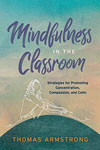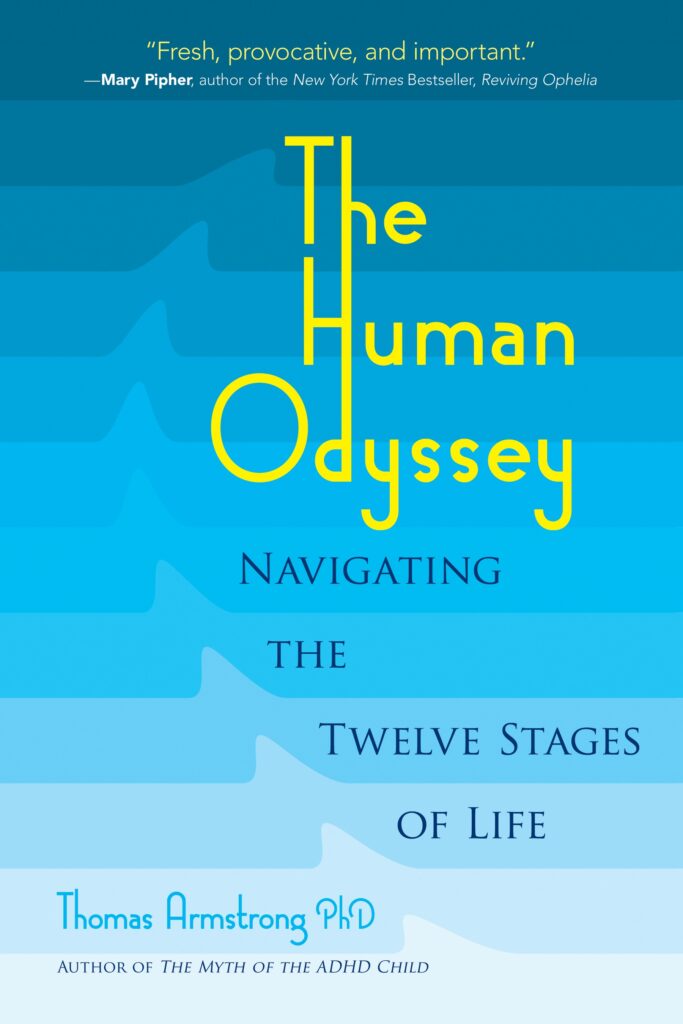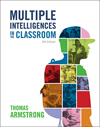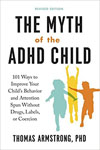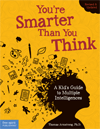Part 7 of my 12-part video series based on my book The Power of the Adolescent Brain: Strategies for Teaching Middle and High School Students is now on this blog (press play button above) or available for viewing on You Tube. A copy of the transcript of the video is provided below:
‘’Hi, I’m Dr. Thomas Armstrong, and this is Video #7 in my video series based on my book The Power of the Adolescent Brain: Strategies for Teaching Middle and High School students (published by ASCD). As part of this series we’re looking at eight practices that middle and high school teachers can implement in the classroom, which are in line with recent research concerning how the adolescent brain develops. In this video, we’re going to focus on adolescent brain-friendly intervention #3: taking advantage of peer learning connections.
Studies reveal that adolescents consistently spend more time with peers than with adults or children, report that they are happiest when they are with their peers, and, when deciding how to behave in a variety of situations, give the highest priority to peer norms. On the other hand, when peer norms become the guiding principle for a teen’s conduct, it can open the door to situations where ‘’the blind are essentially leading the blind.’’ in other words, where teens may hook up with potentially violent gangs, drug abusers, and other poor peer role models.
So the question becomes, what can we do as educators to help counteract the negative influence of peers? While there’s not a lot we can do in terms of peer connections outside of the classroom, we can strive to create learning conditions inside the classroom where peers have the opportunity to connect with each other in positive ways. In fact, because peer norms are so important to teens, creating positive peer connections in the classroom may be one of the best ways to promote effective learning in school.
There have been a number of neuroscience studies in the past two decades supporting the idea that peer influence is embedded deep within the adolescent’s brain, including fMRI (or functional magnetic resonance imaging) scanning of the brain which involves detecting mental activity the brain while subjects are involved in learning tasks. In one such study, teens played a video game called Cyberball inside the MRI machine, believing they were interacting with two peers outside the machine. At a certain point in the game, the subject inside the machine was cut out of the game and had to watch on the screen as the two players interacted with each other and excluded the subject. When this occurred, an area of the brain called the subgenual anterior cingulate began to fire, indicating that a lot of activity was going on in that area. This region is associated with acute emotional distress and has been linked to mood disorders such as unipolar depression. Essentially, the neuroscientists discovered a key area related to the neurobiology of peer rejection.
In another brain scan study, adolescents were asked during a fMRI scan to respond to statements that involved social self-evaluations such as ‘’do you think I’m cool?’’ When they did this, an area of the brain called the nucleus accumbens lit up. This region of the limbic system or emotional brain is associated with rewards, motivation, and addiction. In other words, being positively evaluated by a peer during adolescence, represents a kind of ‘’high’’ not dissimilar from taking a drug. Conversely, negative peer evaluations can be as devastating as or more devastating than being cut out of a game of Cyberball. Because the limbic system or emotional brain matures much earlier in adolescence than the more rational prefrontal cortex (which doesn’t fully mature until the early twenties), a bully’s insults can trigger a global negative emotional response such as the one indicated in this slide, while a more reasonable interpretation from the still maturing prefrontal cortex may not yet be available to the teen being bullied.
All of this adds up to the fact that positive peer learning connections are vital to an adolescent’s wellbeing, to their sense of self, and to their social development. In the rest of this video, we’re going to look at 9 practical strategies for creating positive peer connections in the middle school or high school classroom.
The first strategy involves using peer learning and teaching. When students can teach each other, both sides get something out of the exchange. The one being taught learns important skills, while the one doing the teaching has to organize their thinking or metacognitive abilities in order to effectively present the material. After teaching a lesson, for example, a teacher can ask students to rank their understanding of the material on a scale of 1 to 10, and then pair those between 6 and 10 (as teachers) with those between 1 and 5. It would be important, of course, to make sure that all students over a period of days or weeks get to be teachers and that all also have the opportunity of being taught.
A second approach to creating positive peer connections is to use collaborative or cooperative learning. In this case, peers teach each other, solve problems, or plan projects, in a group context. A teacher, for example, when presenting a chapter in a textbook, can ‘’jigsaw’’ it and have different groups study and then present material from different sections of the chapter. Or, groups can be formed to take on long-term projects such as developing a community-based initiative like investigating the quality of the water in a town’s drinking supply.
A third strategy is using peer mentoring. In this case, older students give guidance to younger students, as for example, when twelfth graders offer to provide orientation sessions to incoming 9th graders at a high school, or when an 8th grade student shows a 6th grade student in a middle school how to effective use the library services in the school.
A fourth way to use positive peer connections in the classroom involves letting peers critique each others’ work. This can be as simple as having peers correct each others papers or tests, or involve a more thorough critique of longer term projects or papers. Students are more likely to listen to their peers’ criticisms (both positive and negative) and take them to heart than if they get the same feedback from a teacher. Students should be given guidelines in advance to ensure that the feedback facilitates learning, including the advice that the feedback be kind, helpful, and specific.
A fifth strategy involves setting up a peer mediation program in the middle school or high school. Peer mediation is a process of having students judge other students who have broken school rules or violated school policies or ethical principles such as plagiarism or cheating. Rather than turning such incidents into punitive power struggles between teachers or administrators and students, these problems can be adjudicated by peers, both in determining guilt or innocence and also in assigning an appropriate consequences or restorations for the offense.
A sixth approach to positive peer learning connections involves creating small learning communities in the middle school or high school. This strategy is a school-wide reform, and suggests that instead of large classes and impersonal schools that tend to alienate students, the school or each grade within it, be divided into smaller learning communities, each one guided by a home room teacher that the student can form a personal relationship with. These smaller groups can then serve as on-going collaborative learning groups where project-based learning, critical discussions, and personalized learning can take place. One excellent book that explains how this was done in a school in Harlem, New York City, is Deborah Meier’s book The Power of Their Ideas.
A seventh strategy involves developing classwide simulations, where the classroom is turned into a total environment representing a living embodiment of the material being studied in the course. Some teachers, for example, have turned their classrooms into court rooms, political campaign offices, or model United Nations. One of my friends and colleagues David Thornburg, took a group of students in Brazil and turned their classroom into a spaceship heading out on a journey to Mars. Still other teachers have created classrooms that mimicked historical eras, scenes from literature, or laboratories of famous scientists. These simulations facilitate cooperative and collaboration, and help to create positive new connections between peers in the classroom.
The eighth strategy is actually the simplest of all 9 strategies covered in this video. It suggests that teachers provide frequent opportunities for students to share what they’ve learned with someone sitting next to them. For example, I’ve used these two simple statements as a framework for sharing after giving a lecture, or after having students do a learning activity, read an assignment, or engage in some other learning experience. The time taken for this is minimal – as little as a minute or two for each person to share. But the frequent use of this intervention can help students who need to bounce their ideas off of another person to more fullest grasp the idea or skill.
Finally, the ninth strategy for creating positive peer connections involves having students play games together. These games can be non-tech oriented, such as board games. In fact, any concept or skill can be turned into a board game with dice and markers, such as a math game where math problems are placed on the squares that form a twisting pathway on the board, and answers are placed on index cards keyed to the problems. Increasingly, we’re seeing more and more examples of quality educational video games that teach a wide range of skills and concepts, and these can be turned into peer learning opportunities if students are allowed to play them in pairs or small groups.
If you would like more information about providing positive peer learning connections at the middle and high school level, or want to know about all eight interventions that are adolescent brain-friendly, get my book The Power of the Adolescent Brain: Strategies for Teaching Middle and High School Students, available through Amazon or other online sources including the publisher ASCD. You can also find the other videos in this 12-part series on my You Tube channel.
For more information about my work, go to my website: www.institute4learning.com,
Follow me on Twitter: @Dr_Armstrong.






